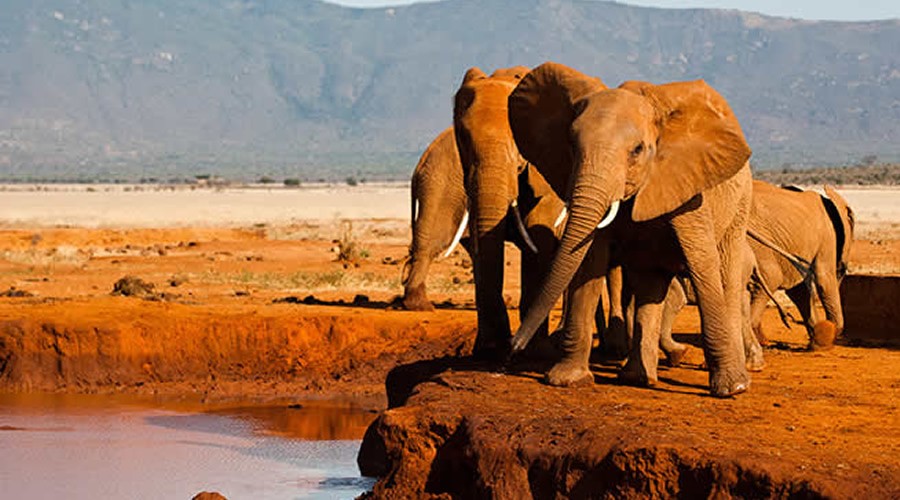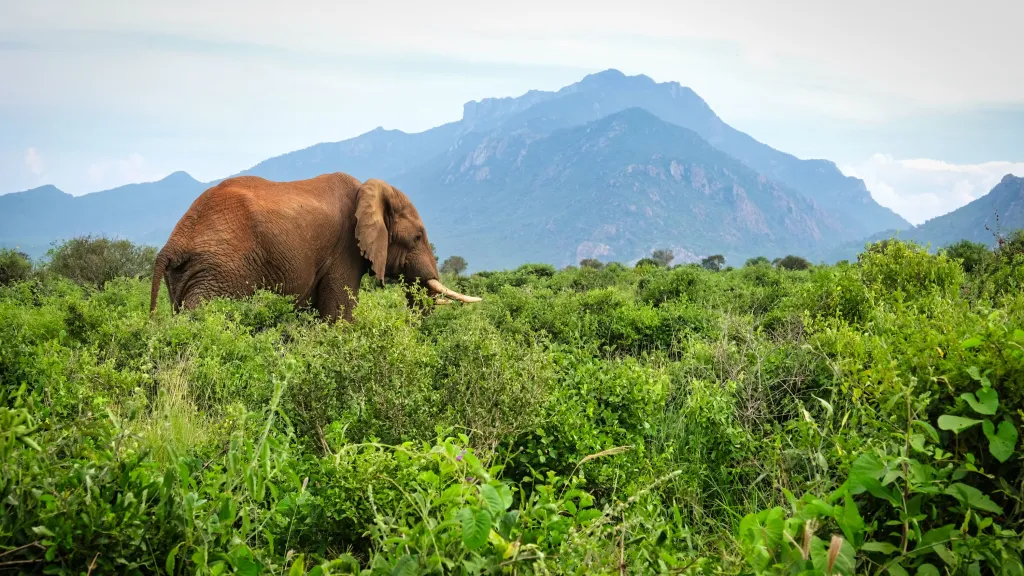In the late 19th century, the construction of the Kenya-Uganda Railway was gruesomely interrupted by the Tsavo Man-Eaters, a pair of notorious lions that preyed on over a hundred workers. This article delves into their story, the historical context, and their impact on wildlife management in Tsavo National Park.
The Historical Backdrop of Tsavo
Set in the rocky terrain and dense thorny bushlands of the Tsavo National Park region in Kenya, the Kenya-Uganda Railway project faced harsh geographical and climatic challenges. This massive engineering feat at the turn of the 19th century not only marked the height of British colonial ambition in East Africa but also set the stage for a socio-economic transformation. Tasked with bridging the vast wilderness to enhance trade and control, the British employed thousands of workers, predominantly from India, bringing them into the heart of an untamed African landscape. This influx created a melting pot of cultures but also a terrain of conflict and survival, struggling against the relentless forces of nature.
As work on the railway progressed, the project became notorious for the frequent and ferocious lion attacks on the labor camps. These events sparked a blend of terror and mysticism among the workers, exacerbating the already strained relations between the British overseers, the Indian workforce, and the local African communities. The growing tensions were not just due to the dangerous working conditions but also stemmed from the colonial disregard for local knowledge and the environmental disruption caused by the construction. African laborers, familiar with the ways of the wilderness, found their warnings and advice often ignored, while Indian workers, alien to the African landscapes and its perils, were thrust into a situation that challenged their survival to the core.
The emergence of lion attacks, particularly by the duo of maneless male lions known as the Tsavo Man-Eaters, soon turned the railroad construction into a deadly battleground between man and beast. The project, hailed as a beacon of modernization and progress, quickly became mired in tales of horror that spread beyond Tsavo, drawing international attention. This period highlighted the fragility of human intrusion into the natural world, serving as a grim reminder of the respect and understanding required to navigate Africa’s vast wilderness areas.
Encountering the Tsavo Man-Eaters
Emerging from the shadowed tales of the Tsavo National Park, the saga of the Tsavo Man-Eaters unfolds with a gripping narrative that has fascinated historians, scientists, and the general public alike. These maneless lions embarked on a notorious spree of attacks against the railway workers, thrusting the Tsavo region into the international spotlight. The chilling events began in March 1898, during the construction of the Uganda Railway, when the first of many terrifying attacks occurred. Across a nine-month period, these relentless predators claimed the lives of an estimated 35 to 135 workers, though the exact number remains disputed.
John Henry Patterson, a British military engineer and the man tasked with overseeing the railway’s construction, played a pivotal role in this harrowing narrative. Faced with growing fear among his crew and the potential halt of the railway project, Patterson undertook a series of strategic maneuvers aimed at capturing the lions. Utilizing a combination of traps, night watches, and enclosures built around the worker’s camps, Patterson engaged in a deadly game of cat and mouse with the lions. After several anxious weeks and numerous failed attempts, he successfully killed the first lion on December 9, 1898, and the second lion three weeks later, eventually restoring a fragile peace to the region.
The reasons behind the Tsavo lions’ unusual predation habits have long been the subject of speculation and research. Several theories have been proposed, from scarcity of their usual prey due to a severe drought, to the disruption of their natural habitat by the railway construction. However, subsequent examination of the lions’ skulls and teeth provided more concrete clues. Dental examinations revealed significant damage and disease, suggesting that these injuries could have contributed to the lions’ difficulty in hunting wild prey, thus turning their attention to the more accessible railway workers. Moreover, historical accounts suggest a perfect storm of environmental pressures that might have led to this shift in predation behavior, including a rinderpest epidemic that decimated wildlife populations across the region.
This grim chapter in the history of Tsavo National Park serves not only as a testament to the unpredictable and often perilous nature of the wild but also underscores the profound impact of human activity on wildlife behavior. The saga of the Tsavo Man-Eaters, while a unique and isolated event, hints at the broader, complex interactions between humans and wildlife in shared environments, offering invaluable insights into the challenges of conservation and coexistence.
Unraveling the Mysteries: Scientific Insights
Following the harrowing accounts of the Tsavo Man-Eaters, scientific inquiry sought to understand why these lions deviated from typical predatory behavior. Research focused on the lions’ skulls and jaws, revealing significant dental injuries. These findings pointed to the lions suffering from severe dental diseases, which likely caused them extreme pain when hunting their natural prey. This evidence suggested that the lions turned to preying on humans not out of preference but necessity, as humans were softer targets that required less bite force to kill.
Further investigations delved into the environmental conditions of Tsavo National Park at the time of the attacks. Researchers proposed that a severe drought and an ensuing displacement of game could have forced the lions to adapt their hunting tactics and diet to survive. This adaptive behavior underscored the lions’ remarkable resilience and their capacity to overcome challenges posed by their environment and physical condition.
Such scientific insights into the Tsavo lions not only unravel the mysteries behind the infamous man-eaters but also contribute significantly to our understanding of lion ecology. They reveal how apex predators might shift their behavior in response to environmental pressures and physical limitations. This knowledge is invaluable for conservation strategies and ensuring the coexistence of humans and lions in shared landscapes, as will be explored in the following discussions on the legacy and conservation efforts in Tsavo.
Legacy and Conservation in Tsavo
The legacy of the Tsavo man-eaters has significantly influenced conservation strategies within Tsavo National Park. These historical events have drawn global attention to the park, shaping public perceptions and highlighting the importance of coexistence between humans and wildlife. The focus has shifted towards studying lion behavior, understanding their needs for space and prey, and how human activity affects their natural habitat. Conservation efforts now prioritize preserving the lion population and maintaining the ecological balance of Tsavo, ensuring both wildlife and human communities can thrive. Advanced monitoring techniques, habitat restoration projects, and community awareness programs exemplify ongoing efforts to secure a future where legends serve as a bridge to comprehensive conservation strategies.
Conclusions
The tale of the Tsavo Man-Eaters illustrates the complex interplay between humans and wildlife during a time of rapid industrial change. Through understanding these historical accounts and scientific insights, we learn crucial lessons on wildlife management and conservation. Protecting the rich biodiversity of Tsavo National Park remains a vital, ongoing mission inspired by its past.




